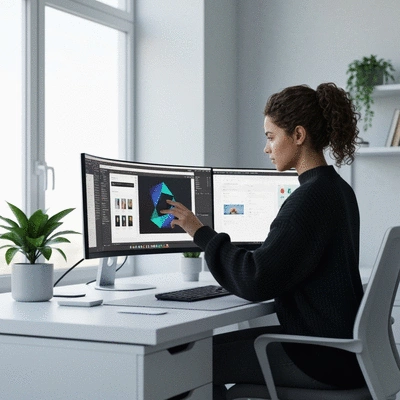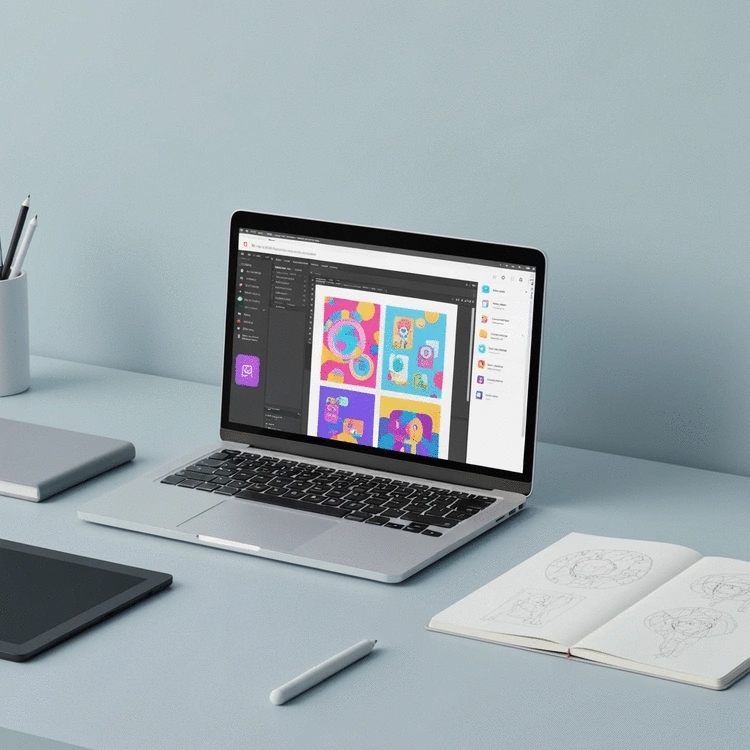How much time do you waste on repetitive tasks in your design workflow? The answer might surprise you! In the competitive world of design, every minute counts. By mastering workflow efficiency in Figma, you can reclaim precious hours for creativity and innovation.
What You Will Learn
- The importance of optimizing your Figma workflow to improve productivity and creativity.
- Common workflow bottlenecks in Figma and strategies to address them, such as design systems and communication tools.
- How a well-defined design system can enhance visual consistency and streamline collaboration within teams.
- Effective methods for measuring success in workflow optimization, including time tracking and design review feedback.
Optimizing Your Figma Workflow: Key Areas & Metrics
This visual highlights critical areas for workflow optimization in Figma and the metrics used to measure success.
Workflow Bottlenecks
- Inconsistent design elements
- Difficulty in team collaboration
- Over-reliance on manual updates
Design System Benefits
- Clear design guidelines
- Reusable component library
- Easier team onboarding
Measuring Success Metrics
- Time Tracking Tools
- Design Review Feedback
- Version Control Analysis
- Completion Rates
Advanced Figma Techniques
- Auto Layout
- Master Components
- Effective Collaboration
Understanding Workflow Efficiency in Figma
In the fast-paced world of design, workflow efficiency is crucial. When using tools like Figma, optimizing your workflow can greatly enhance your productivity, allowing you to focus on what truly matters: creating stunning designs. With advanced techniques, you can save hours of time that can be better invested in innovation and creativity.
Imagine being able to streamline repetitive tasks or easily adapt your designs for different screen sizes with a few clicks! It’s not just about working harder; it’s about working smarter. By prioritizing efficiency in your Figma workflow, you can unleash your creative potential and deliver exceptional results.

Why Optimize Your Figma Workflow?
Optimizing your Figma workflow is essential for several reasons. For one, it reduces the time spent on mundane tasks, allowing you to dedicate more energy to ideation and creativity. This not only enhances your output but also boosts overall job satisfaction.
- Improved productivity: Less time on repetitive tasks means more time for creativity.
- Faster project completion: Streamlined workflows lead to quicker turnarounds.
- Enhanced collaboration: A well-optimized workflow can help teams communicate more effectively.
Additionally, working more efficiently can lead to better collaboration within teams, as everyone can focus on their roles without getting bogged down in unnecessary processes. Optimizing your Figma workflow ultimately paves the way for a more innovative and dynamic design environment. According to a report by Figma, prioritizing a design system and consistent processes directly impacts a team's productivity and the quality of their output. You can read more about it in the State of the Designer Report 2023.
Identifying Common Workflow Bottlenecks in Figma
Designers often face several challenges in Figma, which can hinder their workflow. Identifying these bottlenecks is the first step toward improving productivity. Common issues include:
- Inconsistent design elements that lead to wasted time on revisions.
- Difficulty in collaborating with team members due to unclear communication.
- Over-reliance on manual updates that can be automated.
By recognizing these challenges, we can adopt strategies to mitigate them. For example, establishing a design system can resolve inconsistencies, while utilizing comments and feedback features can improve team communication. Let’s take a moment to reflect on your own experience: what bottlenecks have you encountered, and how did you address them?
Exploring Design Systems for Consistent User Interfaces
A design system plays a crucial role in maintaining visual consistency across Figma projects. It serves as a single source of truth for design elements, helping teams collaborate more effectively. With a well-defined design system, designers can ensure that all components, colors, and typography remain uniform throughout a project. The International Research Journal of Engineering and Technology provides insights into how design systems significantly improve consistency and efficiency in design processes, as detailed in their paper on User Interface Design using Design Systems.
- Establishing a clear set of design guidelines that everyone can follow.
- Creating a library of reusable components to speed up the design process.
- Facilitating easier onboarding for new team members with structured resources.
By implementing a design system, you not only enhance consistency but also streamline teamwork. When everyone is on the same page, it leads to more productive collaboration and higher-quality results in your projects.
Engage with Us!
What has been your biggest challenge in optimizing your workflow in Figma? Are there specific tools or techniques that have made a significant difference for you? Share your experiences and insights below!
Frequently Asked Questions About Figma Workflow Optimization
- Q: Why is workflow efficiency important in Figma?
- A: Workflow efficiency in Figma is crucial for saving time, boosting creativity, and improving overall productivity. It allows designers to focus on innovation rather than repetitive tasks.
- Q: What are common workflow bottlenecks in Figma?
- A: Common bottlenecks include inconsistent design elements, difficulties in team collaboration due to unclear communication, and over-reliance on manual updates that could be automated.
- Q: How can a design system help optimize a Figma workflow?
- A: A design system provides a single source of truth for design elements, ensuring visual consistency, speeding up the design process with reusable components, and facilitating easier onboarding for new team members.
- Q: What methods can be used to measure the success of workflow optimization?
- A: Success can be measured using time tracking tools (e.g., Toggl, Clockify), design review feedback, version control analysis, and monitoring project completion rates against benchmarks.
- Q: What advanced Figma techniques are recommended for workflow improvement?
- A: Advanced techniques include Auto Layout for responsive designs, Master Components for reusability and consistency, and effective collaboration strategies for team synergy.

Implementing These Techniques for Real Results
Now that you’re armed with a set of advanced techniques, it’s time to integrate these strategies into your own workflows. The beauty of these methods lies in their adaptability! By applying them, you can start seeing tangible improvements in your design process.
Don’t just dive in headfirst; instead, take a moment to reflect on your current workflow. Where do you spend too much time? What repetitive tasks could be automated? Identifying these areas can be the first step towards transformation. Figma's Config 2023 recap highlighted many new features and improvements aimed at streamlining workflows, reinforcing the platform's commitment to efficiency. Learn more about these advancements in the Config 2023 Recap.
Measuring Success in Workflow Optimization
How do you know if your efforts are paying off? Measuring success is crucial in understanding the impact of the techniques you implement. There are several metrics and tools available that can help track efficiency and effectiveness.
- Time Tracking Tools: Use applications like Toggl or Clockify to monitor how long tasks take before and after implementing changes.
- Design Review Feedback: Gather input from team members on perceived improvements in workflow and collaboration.
- Version Control Analysis: Compare the number of design iterations and updates made before and after the adoption of new techniques.
- Completion Rates: Measure how many projects are completed on time compared to previous benchmarks.
By utilizing these tools, you'll be able to create a clear picture of how your design efficiency evolves over time. Tracking these metrics not only shows your progress but also helps identify additional areas for improvement!
Conclusion: Take Your Figma Skills to the Next Level
As we wrap up, remember that mastering these advanced techniques in Figma can significantly enhance your design workflow. By embracing methods like Auto Layout, master components, and effective collaboration strategies, you’ll not only save time but also elevate your design quality.
I'm eager to hear from you! What challenges have you faced in optimizing your Figma experience? Share your insights and let’s learn together as we continue to explore the vast world of design.
Call to Action: Share Your Success Stories
Now it's your turn! Have you tried any of these techniques? What’s your favorite Figma trick that has saved you time? Drop your thoughts in the comments below, and let’s inspire each other with our discoveries!
Recap of Key Points
Here is a quick recap of the important points discussed in the article:
- Optimizing your Figma workflow enhances productivity and creativity.
- Identifying common bottlenecks, such as inconsistent design elements and unclear communication, can lead to significant improvements.
- Implementing a design system ensures visual consistency and facilitates better teamwork.
- Measuring success through time tracking tools and feedback helps assess the impact of workflow optimization techniques.
- Adopting advanced techniques like Auto Layout and master components can save time and improve design quality.






